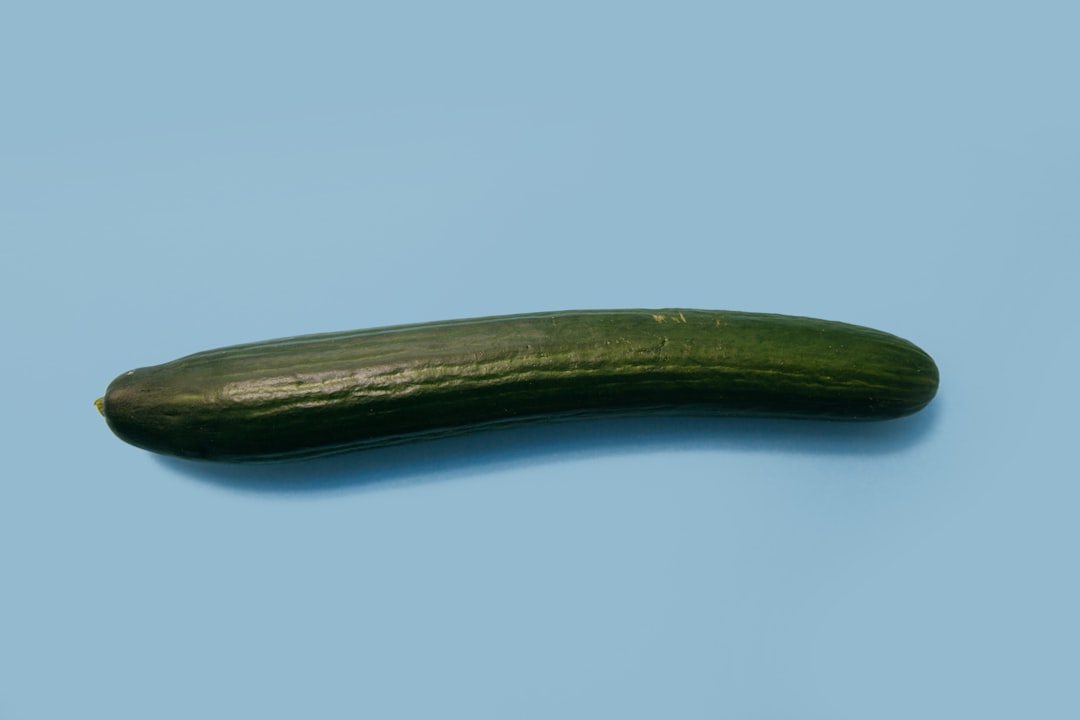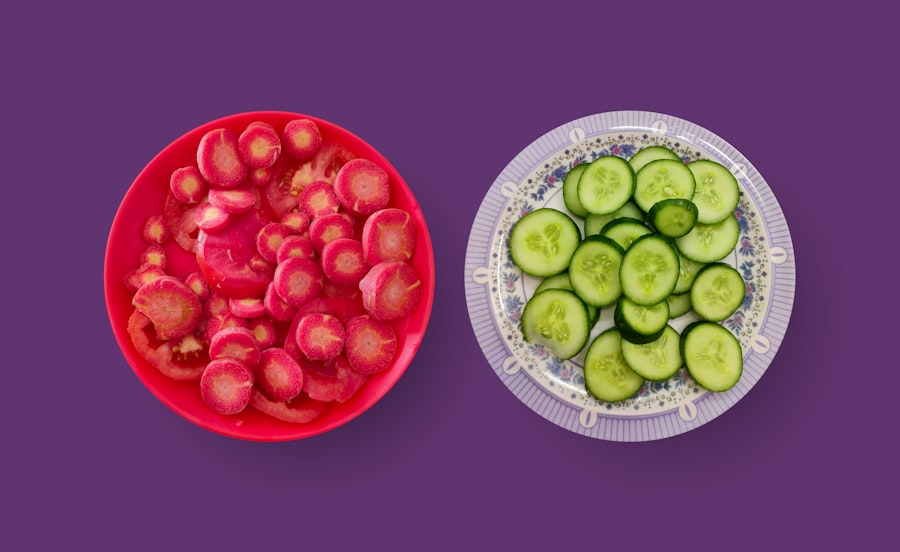Growing Cucumber Plants: Tips and Tricks

Cucumber plants are a popular choice for home gardeners due to their ease of cultivation and delicious taste. These plants belong to the Cucurbitaceae family and are native to South Asia. They are known for their vining growth habit and produce long, cylindrical fruits that are typically green in color. Cucumbers are not only a refreshing addition to salads and sandwiches, but they also offer numerous health benefits. They are low in calories, high in water content, and rich in vitamins and minerals.
Growing cucumber plants at home can be a rewarding experience. Not only do you get to enjoy the fresh taste of homegrown cucumbers, but you also have the satisfaction of knowing exactly how they were grown. Additionally, growing your own cucumbers allows you to avoid the use of pesticides and other chemicals that are often found in store-bought produce. Whether you have a large backyard or a small balcony, cucumber plants can be grown in containers or directly in the ground, making them suitable for any size garden.
Choosing the Right Cucumber Variety for Your Garden
When it comes to choosing cucumber varieties for your garden, there are several factors to consider. First and foremost, you need to determine whether you want to grow slicing cucumbers or pickling cucumbers. Slicing cucumbers are typically larger and have a milder flavor, making them perfect for salads and sandwiches. Pickling cucumbers, on the other hand, are smaller and have a more intense flavor, making them ideal for pickling.
Another factor to consider is the space available in your garden. If you have limited space, you may want to choose compact or bush varieties that don’t require as much room to grow. On the other hand, if you have plenty of space, you can opt for vining varieties that will spread out and produce more fruit.
Some popular cucumber varieties for home gardens include ‘Marketmore 76’, ‘Straight Eight’, ‘Lemon’, ‘Boston Pickling’, and ‘Armenian’. These varieties are known for their excellent flavor, high yield, and disease resistance. It’s always a good idea to do some research and read reviews before choosing a specific variety to ensure that it will thrive in your growing conditions.
Preparing the Soil for Cucumber Planting
Cucumber plants require well-draining soil that is rich in organic matter. Before planting, it’s important to prepare the soil to create the optimal growing conditions for your cucumber plants.
Start by clearing the area of any weeds or debris. Then, loosen the soil with a garden fork or tiller to a depth of at least 12 inches. This will help improve drainage and allow the roots to penetrate the soil more easily.
Next, incorporate organic matter into the soil, such as compost or well-rotted manure. This will help improve the soil’s fertility and moisture-holding capacity. Spread a layer of organic matter over the planting area and mix it into the soil using a garden fork or tiller.
Finally, level the soil surface and create raised beds or mounds if desired. Raised beds can help improve drainage and warm up the soil more quickly in the spring. Mounds are beneficial for vining varieties as they provide better air circulation and prevent waterlogging.
Planting Cucumber Seeds or Seedlings
| Planting Cucumber Seeds or Seedlings | Metrics |
|---|---|
| Germination Time | 7-10 days |
| Seed Depth | 1 inch |
| Seed Spacing | 6-12 inches apart |
| Seedling Age for Transplanting | 3-4 weeks |
| Transplanting Spacing | 18-36 inches apart |
| Days to Maturity | 50-70 days |
| Harvest Frequency | Every 2-3 days |
| Yield per Plant | 10-15 cucumbers |
The timing of planting cucumber seeds or seedlings is crucial for successful growth. Cucumber plants are warm-season crops that thrive in temperatures between 70°F and 95°F (21°C and 35°C). They are sensitive to frost, so it’s important to wait until all danger of frost has passed before planting.
If you choose to start cucumbers from seeds, you can start them indoors 3-4 weeks before the last frost date in your area. Sow the seeds in seed trays or small pots filled with seed-starting mix. Plant the seeds about 1 inch deep and keep the soil consistently moist until germination occurs.
Once the seedlings have developed their second set of true leaves, they can be transplanted into the garden. Harden off the seedlings by gradually exposing them to outdoor conditions over a period of 7-10 days. Then, plant them in the prepared soil, spacing them about 12-24 inches apart, depending on the variety.
If you prefer to start with seedlings, you can purchase them from a local nursery or garden center. Transplant the seedlings into the garden following the same steps as mentioned above.
Watering and Fertilizing Cucumber Plants
Proper watering and fertilizing are essential for the healthy growth and high yield of cucumber plants.
Cucumber plants require consistent moisture to thrive, especially during hot weather. Water deeply and regularly, aiming to keep the soil evenly moist but not waterlogged. Avoid overhead watering as it can promote the spread of diseases. Instead, use a soaker hose or drip irrigation system to deliver water directly to the base of the plants.
In addition to regular watering, cucumber plants also benefit from regular fertilization. Before planting, incorporate a balanced organic fertilizer into the soil according to package instructions. This will provide a slow-release source of nutrients for the plants.
Once the plants start to grow, you can side-dress them with compost or apply a liquid fertilizer every 2-3 weeks. This will help replenish nutrients in the soil and promote healthy growth. Be sure to follow the recommended dosage on the fertilizer packaging to avoid over-fertilization, which can lead to excessive foliage growth at the expense of fruit production.
Managing Pests and Diseases in Cucumber Plants

Cucumber plants are susceptible to a variety of pests and diseases that can affect their growth and yield. Common pests that attack cucumber plants include aphids, cucumber beetles, and spider mites. These pests can cause damage to the leaves, stems, and fruits of the plants.
To prevent pest infestations, it’s important to practice good garden hygiene. Remove any weeds or debris that may harbor pests and regularly inspect your plants for signs of infestation. If you notice any pests, you can try using organic insecticides or insecticidal soaps to control them.
Cucumber plants are also prone to diseases such as powdery mildew, downy mildew, and bacterial wilt. These diseases can cause yellowing of the leaves, wilting, and stunted growth.
To prevent the spread of diseases, it’s important to provide good air circulation around the plants by spacing them properly and pruning any overcrowded foliage. Avoid overhead watering and water the plants at the base instead. If you notice any signs of disease, remove and destroy the affected plant parts to prevent further spread.
Pruning and Training Cucumber Vines
Pruning and training cucumber vines is an important practice that can help improve air circulation, reduce disease incidence, and increase fruit production.
Cucumber plants have a tendency to produce long vines that can become tangled and overcrowded if left unattended. By pruning the vines, you can redirect the plant’s energy towards fruit production and improve air circulation around the foliage.
To prune cucumber vines, start by removing any dead or diseased leaves or stems. Then, selectively remove some of the lateral branches that are growing too close together or in undesirable directions. This will help open up the plant and allow more light to reach the remaining foliage.
In addition to pruning, training cucumber vines can help maximize space and increase yield. Vining varieties can be trained to grow vertically on trellises or fences, saving valuable garden space. This also makes it easier to harvest the cucumbers and reduces the risk of fruit rotting on the ground.
To train cucumber vines, gently tie the main stem to the trellis or fence using soft plant ties or twine. As the plant grows, continue to tie the vines to the support structure, ensuring that they are well-supported and not being weighed down by their own weight.
Harvesting Cucumbers at the Right Time
Knowing when to harvest cucumbers is crucial for optimal flavor and texture. Cucumbers should be harvested at the right time to ensure that they are not overripe or underripe.
Slicing cucumbers are typically harvested when they reach a length of 6-8 inches. Pickling cucumbers, on the other hand, are harvested when they are 2-4 inches long. It’s important to check the specific variety you are growing for its recommended harvest size.
When harvesting cucumbers, use a sharp knife or pair of garden shears to cut the fruit from the vine, leaving a small portion of the stem attached. Avoid pulling or twisting the cucumbers off the vine as this can damage the plant.
It’s best to harvest cucumbers in the morning when they are cool and crisp. Store them in a cool place or refrigerate them immediately after harvesting to maintain their freshness.
Storing and Preserving Cucumbers
Freshly harvested cucumbers can be stored in the refrigerator for up to a week. To keep them fresh, wrap them in a paper towel and place them in a plastic bag or container with ventilation holes. This will help absorb excess moisture and prevent them from becoming soggy.
If you have an abundance of cucumbers and want to preserve them for later use, there are several methods you can try. One popular method is pickling, which involves immersing cucumbers in a brine solution made of vinegar, water, salt, and spices. Pickled cucumbers can be stored in jars and enjoyed throughout the year.
Another method is freezing cucumbers. To freeze cucumbers, wash and slice them into desired shapes, then blanch them in boiling water for a few minutes. After blanching, cool them in ice water and pat them dry. Place the cucumber slices in freezer bags or containers and store them in the freezer for up to 3 months. Frozen cucumbers can be used in smoothies, soups, or stir-fries.
Common Mistakes to Avoid When Growing Cucumber Plants
While growing cucumber plants is relatively easy, there are some common mistakes that can affect their growth and yield. Here are a few tips to help you avoid these mistakes:
1. Overwatering: Cucumber plants need consistent moisture, but overwatering can lead to root rot and other diseases. Water deeply and only when the top inch of soil feels dry.
2. Poor soil preparation: Cucumber plants require well-draining soil that is rich in organic matter. Take the time to prepare the soil properly before planting to ensure optimal growing conditions.
3. Lack of support: Vining cucumber varieties need support to grow vertically and prevent fruit rotting on the ground. Provide trellises or fences for the vines to climb on.
4. Neglecting pest and disease control: Regularly inspect your plants for signs of pests or diseases and take action immediately if necessary. Prevention is key to avoiding major infestations or outbreaks.
5. Harvesting too late: Cucumbers should be harvested at the right time to ensure optimal flavor and texture. Check the recommended harvest size for your specific variety and harvest accordingly.
Growing cucumber plants at home can be a rewarding experience that allows you to enjoy fresh, delicious cucumbers while avoiding the use of pesticides and other chemicals. By choosing the right cucumber variety, preparing the soil properly, and providing adequate water and nutrients, you can ensure the healthy growth and high yield of your cucumber plants. Additionally, by practicing good garden hygiene and monitoring for pests and diseases, you can prevent and manage common issues that may arise. So why not give it a try and start growing your own cucumbers at home? You’ll be rewarded with a bountiful harvest and the satisfaction of knowing that you grew them yourself.



